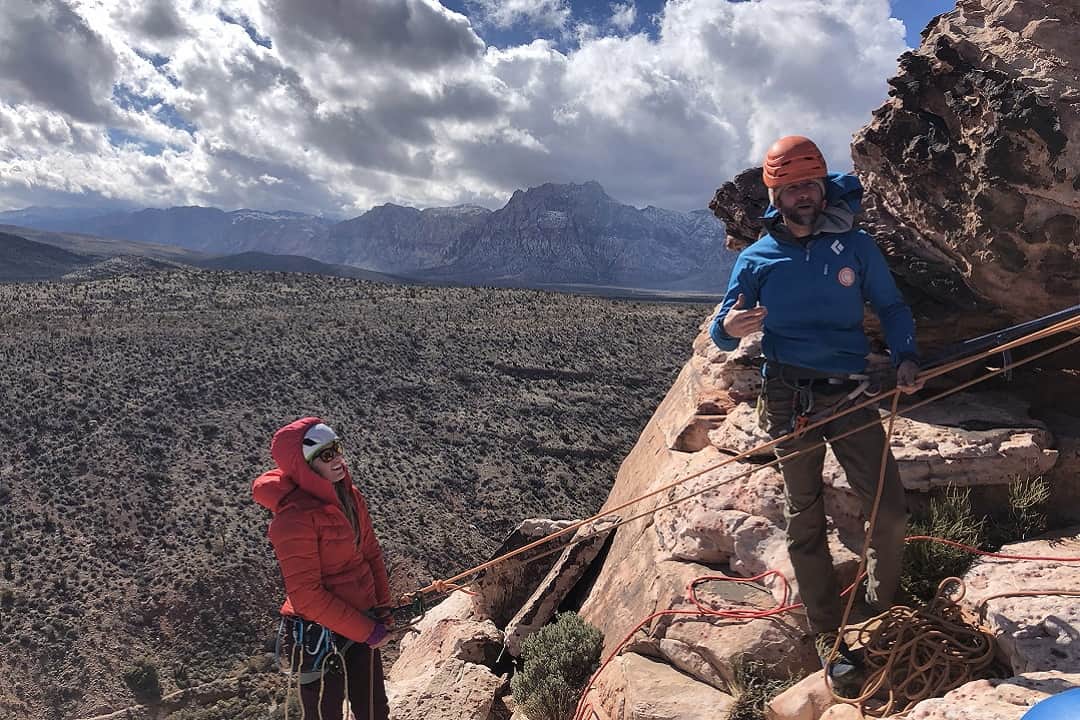He sobbed. He bled. He soared a thousand feet above Yosemite Valley, every inch of arms and legs glued to 70 pounds of gear he had wrangled free from an infamous, bag-snatching flake.
The human/haul bag pendulum ride Jon Richard took on The Prow’s 10th pitch, however, was not the ascent’s nadir.
As the desiccating summer sun set on day two, the duo’s mental stoke — along with their canteens — ran dry, making for a grueling slog to the top. Peeling open the final can of sardines was as celebratory a eulogy to the hard-earned triumph as they could manage.
Then, the literal downhill met the figurative — their punishing dehydration worsened every step through the labyrinth of gullies until rubber legs reduced an already slow hike to a snail-paced, butt-dragging scoot around a steep series of switchbacks.
Finally, they schlepped themselves into Curry Village, California, for the best pizza of their life, a silver patchwork of duck taped, skin-baring pants reflecting their hellish initiation to big wall climbing.
The Formula
It’s been 16 years, and Jon Richard has long shed his multi-pitch gumby for guru.
“I didn’t have someone saying, ‘Jon, here’s how you do that.’ Looking back, we were in over our heads and made some big mistakes. We could have gotten ourselves in epic trouble, and we only get so many epics in our life until it catches up with us,” he said.
His guru status, which conjoins hard knocks and dedicated study, is recognized by the American Mountain Guides Association (AMGA), through which he is a Certified Rock Guide and Certified Single Pitch Instructor. Richard also owns a St. Louis-based tree and rock climbing guide service called Vertical Voyages.

Vertical Voyages stresses the importance of unrelenting awareness and managing of risk.
Richard’s team operates by a formula where safety is the answer rather than the starting point: Identifying risk + Managing risk = Increased safety. Identifying refers to awareness and managing refers to behavior, with the promise being increased but not guaranteed safety.
For example, I am aware of a new climbing area’s chossy nature (identifying risk), therefore I wear a helmet and avoid areas under the climber (managing risk), making myself less likely to get clocked (increased safety).
Identify Risk
“If all you have is a hammer, everything looks like a nail.” The paraphrased Abraham Kaplan quote has broad application. A climber without the right tool or appropriate know-how is like a tradesperson who lacks the same: inefficient and risky.
In addition to the basics — climb, clip, and clean — Richard offers a rapid-fire list of questions to help climbers identify potential risks: How tall is the route? Are there anchors? Is it a mixed route? How does it protect? When was it put up? Can I recognize a sketchy bolt? Do I know my climber’s knot? Did I close the system? Did I pack sufficient water and sardines?
Because identifying risk is equal parts knowledge and awareness, Richard stresses the importance of unrelenting cognizance, substituting the widely suggested “be careful” with “be aware.”
Manage Risk
Managing risk is to wisdom as identifying risk is to knowledge.
“I had a friend who used his Grigri as a hands-free device and refused to tie a catastrophe knot because, ‘it hasn’t failed me yet,’ he’d say. One day, I get a call from him. This time, it did fail and he plunged 30 feet before it engaged just shy of a ground fall,” Richard recounted.
Lesson No. 1 in managing risk: read and use your gear according to the tiny-printed pamphlet that’s stapled around it when you bought it. Lesson No. 2: “It won’t happen to me,” only applies until it doesn’t.
Climb Better Faster
Richard’s real-world inspired philosophy is that qualified instruction is a shortcut to becoming a better climber faster. It certainly would have eased his intro to big wall climbing.
Even with decades of experience, multiple certifications, and the authority to certify others, the middle school teacher turned climbing instructor still hires guides to better himself in various areas as he endeavors to help his own clients improve.
“I want people to enjoy and experience the outdoors safely, and I want Vertical Voyages to be a resource for those who are intrigued by something that seems out of their reach,” Richard said. “That could be climbing trees or rocks for the first time, transitioning from gym to crag, or multi-pitching a big wall.”
Safety Smarts
Want to test your climbing safety IQ? Take Jon Richard’s quiz online at verticalvoyages.com/how-safe-are-you/ to see just how well you can identify and manage risk.
Author: Corrie Hendrix Gambill is a regular contributor to Terrain Magazine.


Leave A Comment